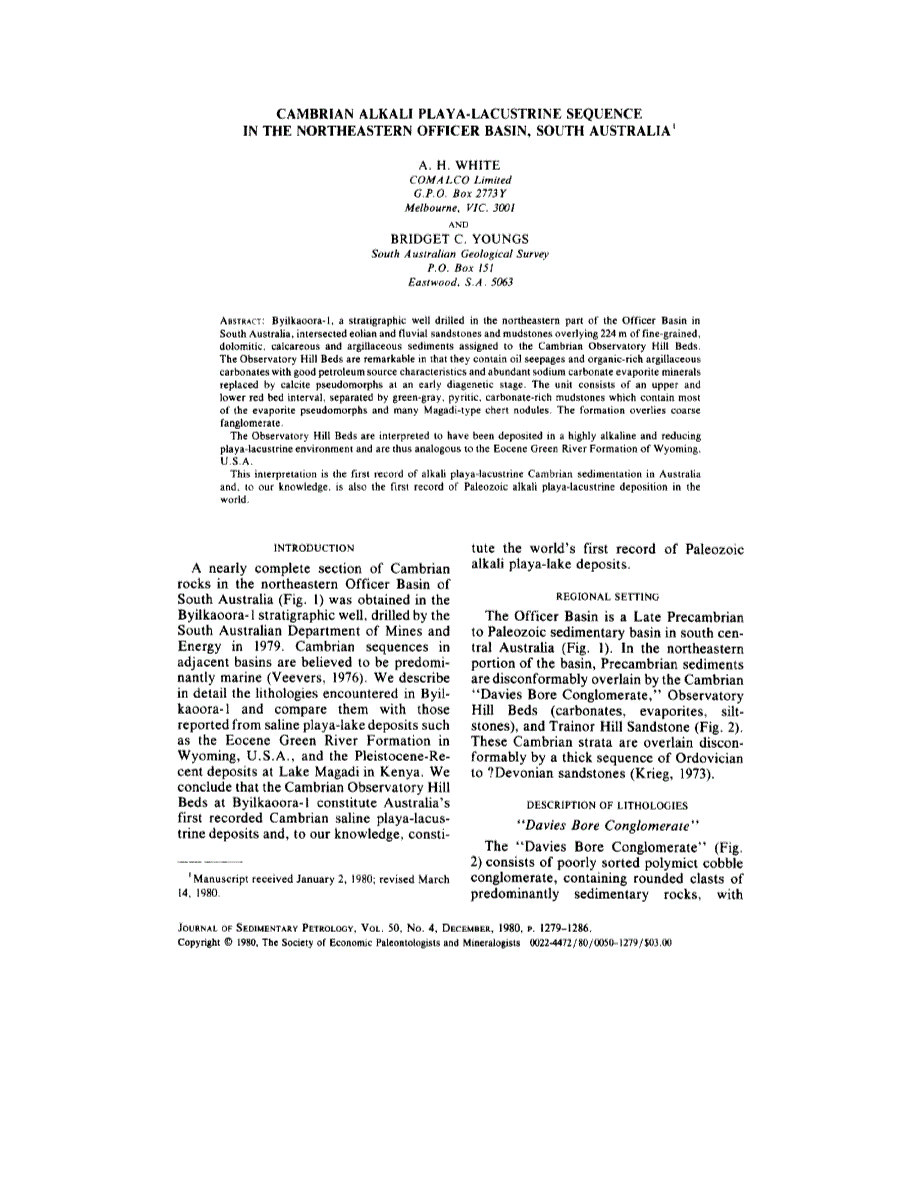Abstract
Byilkaoora-1, a stratigraphic well drilled in the northeastern part of the Officer Basin in South Australia, intersected eolian and fluvial sandstones and mudstones overlying 224 m of fine-grained, dolomitic, calcareous and argillaceous sediments assigned to the Cambrian Observatory Hill Beds. The Observatory Hill Beds are remarkable in that they contain oil seepages and organic-rich argillaceous carbonates with good petroleum source characteristics and abundant sodium carbonate evaporite minerals replaced by calcite pseudomorphs at an early diagenetic stage. The unit consists of an upper and lower red bed interval, separated by green-gray, pyritic, carbonate-rich mudstones which contain most of the evaporite pseudomorphs and many Magadi-type chert nodules, The formation overlies coarse fanglomerate. The Observatory Hill Beds are interpreted to have been deposited in a highly alkaline and reducing playa-lacustrine environment and are thus analogous to the Eocene Green River Formation of Wyoming, U.S.A. This interpretation is the first record of alkali playa-lacustrine Cambrian sedimentation in Australia and. to our knowledge, is also the first record of Paleozoic alkali playa-lacustrine deposition in the world.





